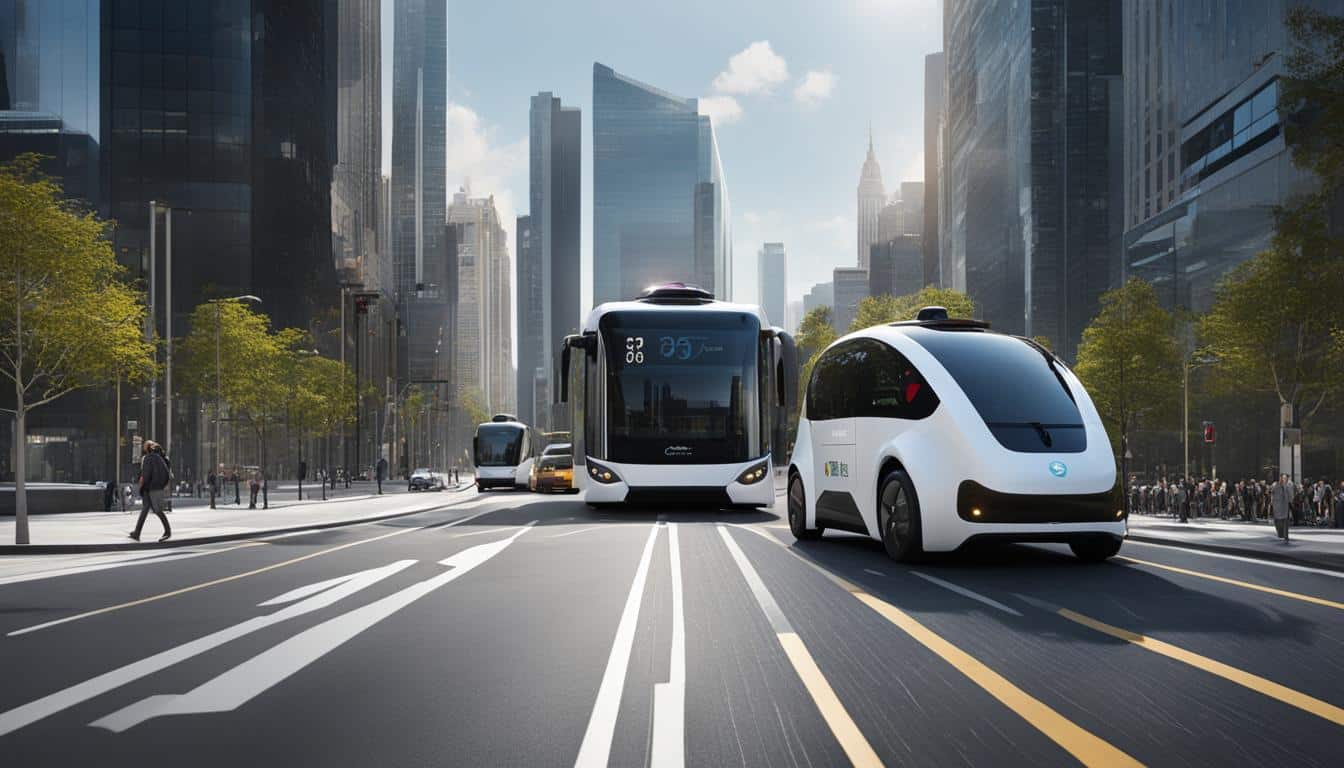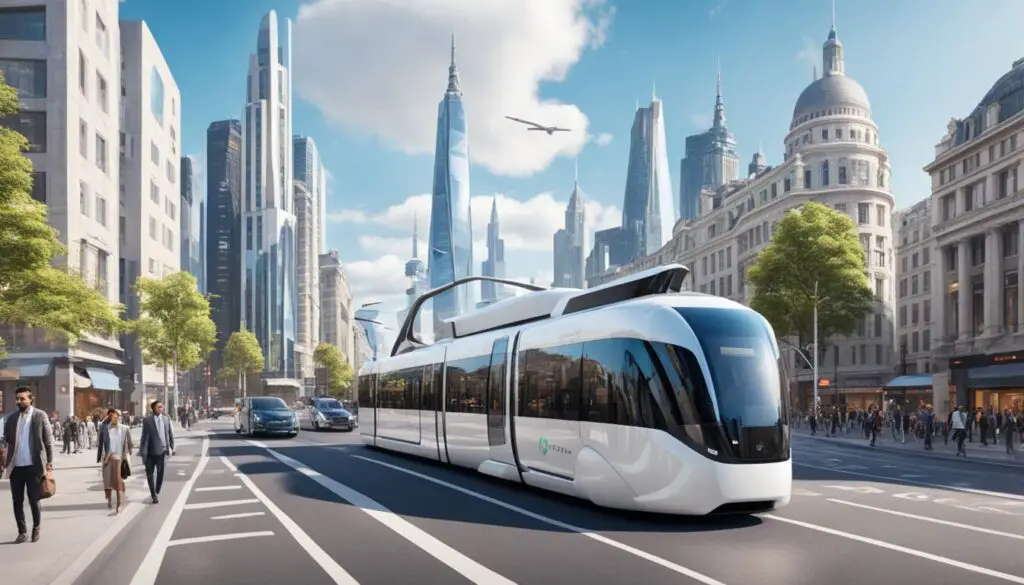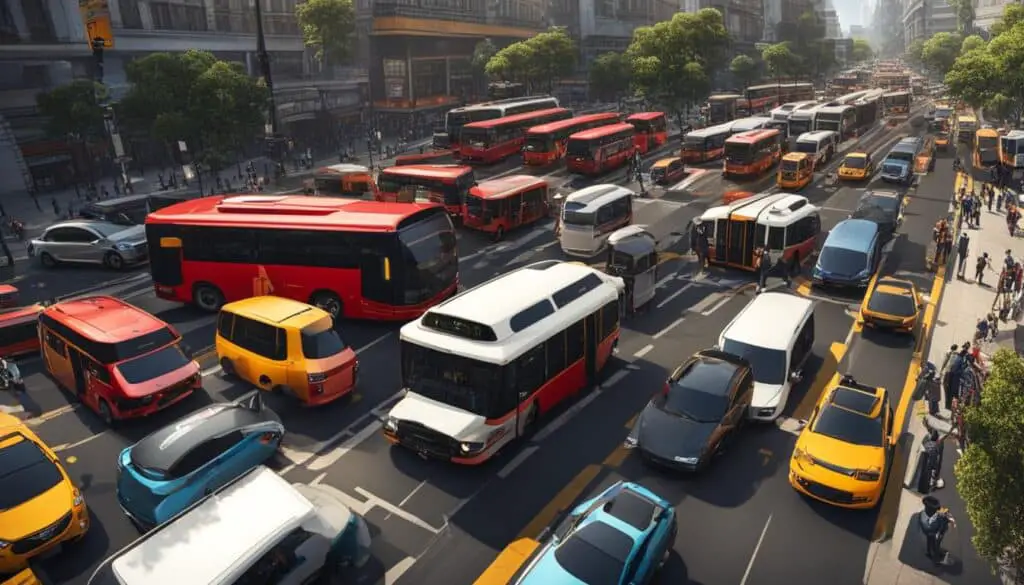
Integrating Autonomous Cars into Public Transportation Systems
Self-driving cars, also known as autonomous vehicles, have emerged as a groundbreaking technology with the potential to revolutionize the way we move in urban environments. While much attention has been focused on their use as personal transportation, there is a growing interest in integrating these autonomous vehicles into public transportation systems. This article will delve into the benefits and challenges of incorporating self-driving cars into public transport, showcasing real-world examples and exploring the future prospects of this transformative integration.
Key Takeaways:
- Integrating self-driving cars in public transport holds immense potential to enhance efficiency, accessibility, and sustainability in urban mobility.
- Benefits include reduced traffic congestion, improved travel times, enhanced accessibility for individuals with mobility challenges, and cost savings for passengers and transit agencies.
- Real-world examples, such as the Arlington RAPID program, demonstrate successful integration of autonomous vehicles with public transit.
- Challenges include safety and regulatory considerations, infrastructure and technology requirements, and potential employment and equity issues.
- Collaboration between public transit agencies and new mobility service providers is crucial for successful integration.
Benefits of Integrating Self-Driving Cars into Public Transport
Integrating self-driving cars into public transport can bring numerous advantages, revolutionizing urban mobility and enhancing the overall transportation experience. Through the seamless integration of autonomous vehicles, public transit systems can reap the following benefits:
- Improved Efficiency: The integration of self-driving cars can significantly reduce traffic congestion and travel times. With autonomous vehicles equipped with advanced sensors and algorithms to optimize routes, passengers can enjoy smoother and more efficient journeys.
- Enhanced Accessibility: Autonomous vehicles offer on-demand and flexible transportation options, particularly beneficial for individuals with mobility challenges. By seamlessly integrating self-driving cars into public transport, it becomes easier for passengers to reach their destinations, including those in areas with limited accessibility.
- Cost Savings: Integrating autonomous vehicles with public transit can lead to cost savings for both passengers and transit agencies. Shared autonomous vehicles have the potential to reduce the need for private car ownership, allowing individuals to save on vehicle-related expenses such as purchasing, maintenance, and parking fees. For transit agencies, incorporating self-driving cars can optimize fleet management, reducing operational costs.
Moreover, the impact of self-driving cars on public transit extends beyond convenience and cost savings. Studies have shown that the integration of autonomous vehicles can have positive environmental effects by reducing the number of private cars on the road. This reduction in traffic not only diminishes congestion but also leads to decreased emissions and improved air quality, contributing to a greener and more sustainable urban environment.
To illustrate the advantages of integrating self-driving cars into public transport, consider the following table that highlights key benefits and their impact:
| Advantages | Impact |
|---|---|
| Improved Efficiency | Reduced traffic congestion and travel times |
| Enhanced Accessibility | Greater mobility options for individuals with limited accessibility |
| Cost Savings | Reduced private car ownership expenses and optimized fleet management |
| Environmental Benefits | Reduced emissions and improved air quality |
Real-World Examples of Integrating Self-Driving Cars into Public Transport
Several cities have already implemented pilot programs and initiatives to integrate autonomous vehicles into public transport, showcasing successful autonomous vehicle projects. These case studies provide valuable insights into the potential of self-driving cars in revolutionizing public transportation systems. Let’s take a look at some real-world examples:
Arlington RAPID Program, Texas
The City of Arlington in Texas launched the Arlington RAPID program, which deployed a fleet of autonomous vehicles to provide on-demand rideshare services integrated with public transit. This initiative aims to improve mobility and accessibility for residents and enhance the overall efficiency of the transportation system. The program has been successful in serving as a first/last-mile solution, connecting passengers seamlessly between public transit hubs and their destinations. By integrating self-driving cars into the existing public transport infrastructure, Arlington has demonstrated the positive impact of autonomous vehicles on urban mobility.
San Francisco’s Autonomous Shuttle Pilot
Another notable example is San Francisco, where a pilot project was implemented to test autonomous shuttles as part of the city’s public transportation network. This initiative aimed to provide convenient and sustainable transportation options for residents and reduce traffic congestion. The autonomous shuttles operated on fixed routes and schedules, offering a reliable and efficient mode of transportation for daily commuters. By incorporating self-driving technology into public transit, San Francisco showcased the potential for autonomous vehicles to enhance the existing transportation infrastructure and provide a seamless travel experience.
These real-world examples highlight the successful integration of self-driving cars into public transportation systems. Through these pilot programs, cities are gaining valuable insights into the benefits and challenges of adopting autonomous vehicles in public transport. The lessons learned from these case studies can inform future initiatives and pave the way for the widespread use of autonomous vehicles in public transportation, ultimately transforming the way we travel in urban environments.

Challenges of Integrating Self-Driving Cars into Public Transport
Despite the numerous benefits, there are several challenges and concerns that need to be addressed when integrating self-driving cars into public transport. These obstacles can hinder the seamless integration of autonomous vehicles with existing transportation systems. Key challenges include:
- Safety and Regulatory Considerations: Autonomous vehicles must navigate complex urban environments and interact with pedestrians, cyclists, and other road users. Ensuring the safety of both passengers and others on the road is of paramount importance. The development of robust safety protocols and regulatory frameworks is essential before widespread deployment can occur.
- Infrastructure and Technology Requirements: The successful integration of self-driving cars necessitates the development of connected systems and reliable communication networks. These technologies are crucial for efficient coordination between autonomous vehicles and existing public transit infrastructure. Without appropriate infrastructure and technology, autonomous vehicles may face challenges in navigating and optimizing their routes effectively.
- Employment Impact: The integration of self-driving cars into public transport raises questions about the potential displacement of jobs in the transportation industry. Autonomous vehicles may replace certain roles traditionally held by human drivers, leading to workforce shifts and potential job losses. Mitigating these concerns and ensuring a smooth transition for affected workers must be considered.
- Equity and Accessibility: Equity issues can emerge when self-driving cars are integrated into public transportation. Ensuring that autonomous vehicles are accessible to all members of society, including those with limited mobility or in underserved communities, is vital. Addressing potential disparities in access and affordability should be a priority to ensure that the benefits of autonomous vehicles are experienced by all.
To overcome these challenges, collaboration between stakeholders, including government agencies, public transit authorities, technology companies, and the public, is necessary. By addressing safety concerns, developing appropriate infrastructure, managing employment transitions, and promoting equitable access, the integration of self-driving cars into public transport can provide a transformative and sustainable solution for urban mobility.

The Role of Shared Mobility and Public Transportation
Shared mobility and public transportation play a crucial role in the integration of self-driving cars into the existing transport ecosystem. They form the foundation for creating connected and sustainable transportation systems that provide efficient and seamless options for passengers.
Shared autonomous vehicles (SAVs) have the potential to complement traditional public transit by addressing the first/last-mile connectivity challenge. SAVs can bridge the gap between residential areas and transit hubs, allowing passengers to access public transportation conveniently.
Furthermore, SAVs can fill in gaps in the transit network, reaching areas where traditional buses or trains may not be economically feasible. By extending the reach of public transportation, shared mobility services enhance accessibility for communities that have limited access to public transit options.
The collaboration between public transit agencies and new mobility service providers is crucial in creating integrated and multimodal transportation systems. By working together, they can combine the strengths of both modes to offer a comprehensive range of transportation options.
This collaboration can be facilitated through the use of digital platforms and applications that integrate various transportation services. Passengers can benefit from a seamless and user-friendly experience, where they can plan their journeys, book rides, and pay for their trips all in one place.
Shared mobility and public transportation are two essential pillars that enable the successful integration of self-driving cars into the existing transport infrastructure. By leveraging the strengths of these two modes, we can create a future where transportation is efficient, accessible, and sustainable.
To illustrate the importance of shared mobility and public transportation, let’s take a closer look at a scenario where these modes collaborate:
| Challenge | Solution |
|---|---|
| First/Last-Mile Connectivity | Shared autonomous vehicles provide convenient transportation between transit hubs and passengers’ final destinations, reducing the reliance on private cars. |
| Accessibility | Shared mobility services fill in transportation gaps in underserved areas, ensuring equitable access to public transit options. |
| Seamless Integration | Digital platforms and applications integrate shared mobility and public transportation services, allowing passengers to plan and coordinate their journeys effortlessly. |
This collaborative approach to transportation can improve overall connectivity, reduce congestion, and enhance the passenger experience. It offers a sustainable and efficient alternative to private vehicle ownership, encouraging more people to rely on shared mobility and public transportation.
The Future of Autonomous Cars and Public Transit
The future prospects of self-driving cars in public transportation are incredibly promising. With advances in technology and the increasing prevalence of autonomous vehicles, there is a unique opportunity to revolutionize urban mobility. By effectively integrating self-driving cars into public transit systems, we can create a connected, efficient, and sustainable transportation network that enhances the overall passenger experience.
In the future, we envision a transportation landscape that includes shared autonomous shuttles and on-demand ride-hailing services as integral components of public transit. These autonomous vehicles will seamlessly integrate with existing public transportation systems to provide convenient first/last-mile connectivity, reducing the reliance on private cars and contributing to a significant reduction in congestion.
One of the key impacts of autonomous vehicles on urban mobility will be the improved accessibility they offer. These vehicles can be programmed to provide transportation solutions for individuals with mobility challenges, enabling greater independence and freedom of movement. By incorporating self-driving cars into public transportation, we can bridge gaps in the transit network and ensure that everyone has access to reliable and convenient transportation options.
The Importance of Sustainable Urban Mobility
“Integration of self-driving cars with public transit is crucial for creating a sustainable and efficient urban transportation system.”
An essential aspect of the future of autonomous cars and public transit is sustainability. With self-driving cars, we have the potential to significantly reduce carbon emissions and improve air quality. By encouraging the use of shared autonomous vehicles, we can reduce the number of private cars on the road, resulting in fewer emissions and a greener environment.
Moreover, the integration of autonomous vehicles into public transportation systems aligns with the broader goal of creating sustainable and livable cities. As urban populations continue to grow, it becomes increasingly important to develop transportation solutions that are efficient, environmentally friendly, and inclusive. Self-driving cars have the potential to address these challenges by providing seamless and accessible transportation options, reducing traffic congestion, and enhancing overall urban mobility.
Conclusion
Integrating self-driving cars into public transport has the potential to revolutionize urban mobility. By improving efficiency, accessibility, and sustainability, autonomous vehicles can address key challenges faced by modern cities. However, it is important to acknowledge the challenges that must be overcome, such as safety and regulatory concerns.
As cities continue to explore and implement pilot programs, collaboration between public transit agencies, new mobility service providers, and advancements in technology will be vital. By working together, it is possible to create a seamless and integrated transportation system that benefits all passengers and contributes to a more sustainable future.
Integrating autonomous cars in public transport holds great promise. The benefits, including reduced congestion, improved accessibility, and cost savings, cannot be ignored. However, it is crucial to approach the integration with a comprehensive understanding of the challenges and to prioritize safety and regulation.
As we move forward, the key to successful integration lies in collaboration and innovation. By harnessing the potential of self-driving cars and leveraging the advancements in urban mobility, we have the opportunity to transform our cities for the better, creating a future where transportation is efficient, accessible, and sustainable.
FAQ
What are the benefits of integrating self-driving cars into public transport?
Integrating self-driving cars into public transport can improve efficiency, reduce traffic congestion and travel times, enhance accessibility for individuals with mobility challenges, and lead to cost savings for both passengers and transit agencies. It can also help reduce emissions and improve air quality.
Can you provide some real-world examples of self-driving cars integrated into public transport?
Yes, several cities have implemented pilot programs and initiatives to integrate autonomous vehicles into public transport. For example, the City of Arlington in Texas deployed a fleet of autonomous vehicles through its Arlington RAPID program, providing on-demand rideshare services integrated with public transit. The program has demonstrated success in improving mobility and accessibility. Similar projects have been implemented in other cities such as San Francisco.
What challenges are associated with integrating self-driving cars into public transport?
Safety and regulatory issues, infrastructure and technology requirements, impact on employment in the transportation industry, and potential equity issues are some of the challenges and concerns associated with integrating self-driving cars into public transport.
What is the role of shared mobility and public transportation in integrating self-driving cars?
Shared mobility and public transportation play a crucial role in integrating self-driving cars into the existing transport ecosystem. Shared autonomous vehicles can complement traditional public transit by providing first/last-mile connectivity, filling in gaps in the transit network, and improving overall accessibility. Collaboration between public transit agencies and new mobility service providers is essential to create integrated, multimodal transportation systems.
What is the future of autonomous cars and public transit?
The future holds great potential for transforming urban mobility through the integration of autonomous cars and public transit. This may include shared autonomous shuttles, on-demand ride-hailing services, and a seamless integration with existing public transit systems. The aim is to reduce congestion, improve accessibility, and enhance the overall passenger experience.
